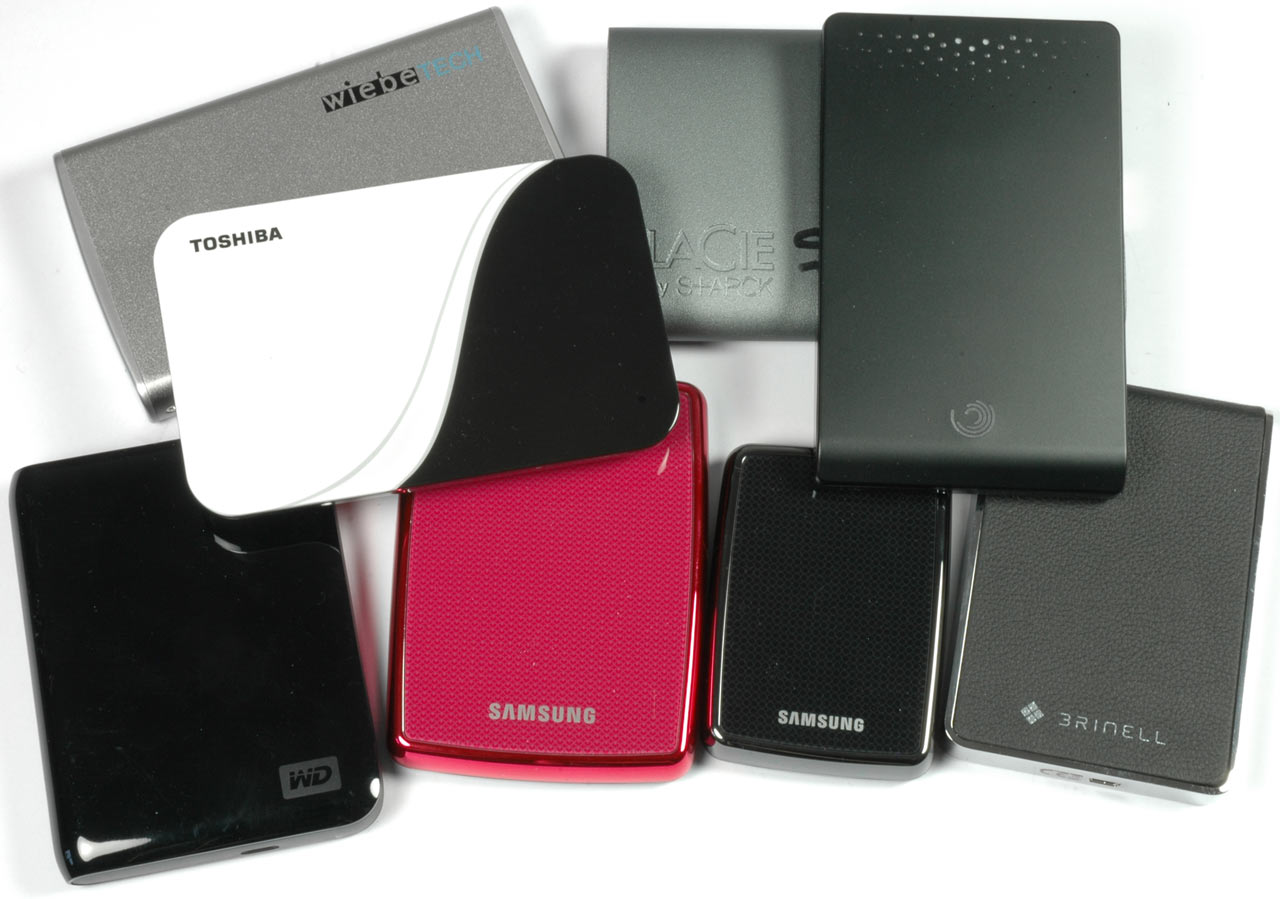Eight Portable Hard Drives Compared: USB 2.0 Lives On
Introduction
There are many portable hard drives on the market, but even though USB 2.0 effectively equalizes their performance, we did find several differentiators among the latest drives from Brinell, LaCie, Samsung, Seagate, Toshiba, Western Digital, and Wiebetech. Some shoot for the best in style, others enable spacious capacity, optimal flexibility, or a long list of features. We want the best all-around offering.
Waiting for USB 3.0
This will probably be one of the most important topics in 2010 when it comes to portable or external storage. USB 2.0 is still the most popular and widespread connection technology, but its 25 to 35 MB/s effective throughput imposes performance bottlenecks on an increasing number of users. FireWire 800 can only be seen as a niche product when compared with USB sales volumes, and eSATA with USB power is only a good choice if you have the required interfaces on all of your host systems. An increasing number of USB 3.0 storage products are hitting the market these days, but it remains questionable whether or not SuperSpeed USB host controllers will be quickly integrated into next-generation chipsets. Intel, certainly one of the standard's key driving forces, has been quiet about USB 3.0, and there remains a chance that the next chipset generation won’t include this interface natively.
Portable Drives Have to Be Convenient
In the case of portable drives like the eight products we compare in this article, questions about performance are less significant. You probably wouldn't use these products to host a movie or music database, but instead store your most needed (and mobile) personal data and important files. Therefore, a portable drive has to be as convenient as possible, meaning small and easy to use, both in its hardware and bundled software.
What About…
Other items to consider are total drive weight, power consumption, noise, and operating temperature. Most drives are easily considered portable, weighing in between 160 to 200 grams, and most will not require more than a few watts, keeping them both quiet and relatively cool. We'll mention the exceptions to these trends as we go through the individual products themselves.
Get Tom's Hardware's best news and in-depth reviews, straight to your inbox.
Current page: Introduction
Next Page Brinell Purestorage Elegant S (500GB, USB 2.0)